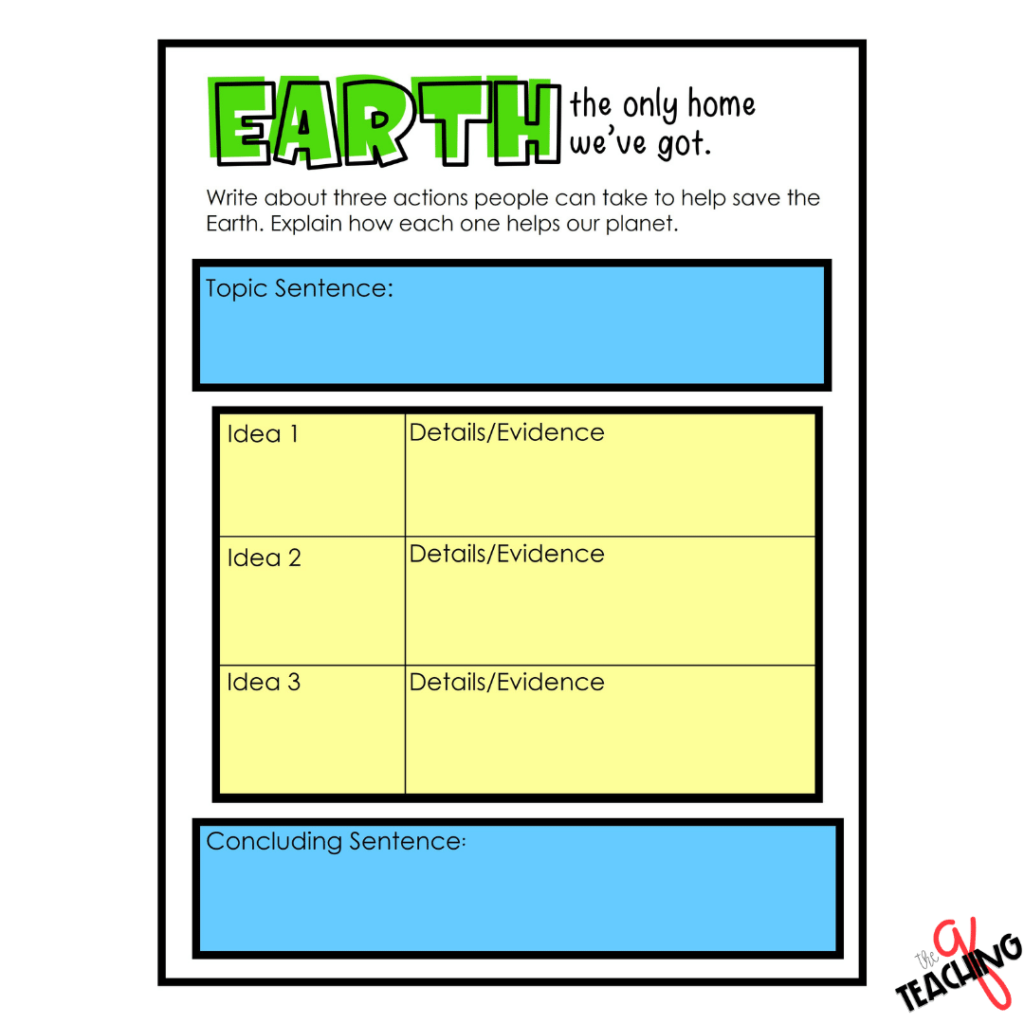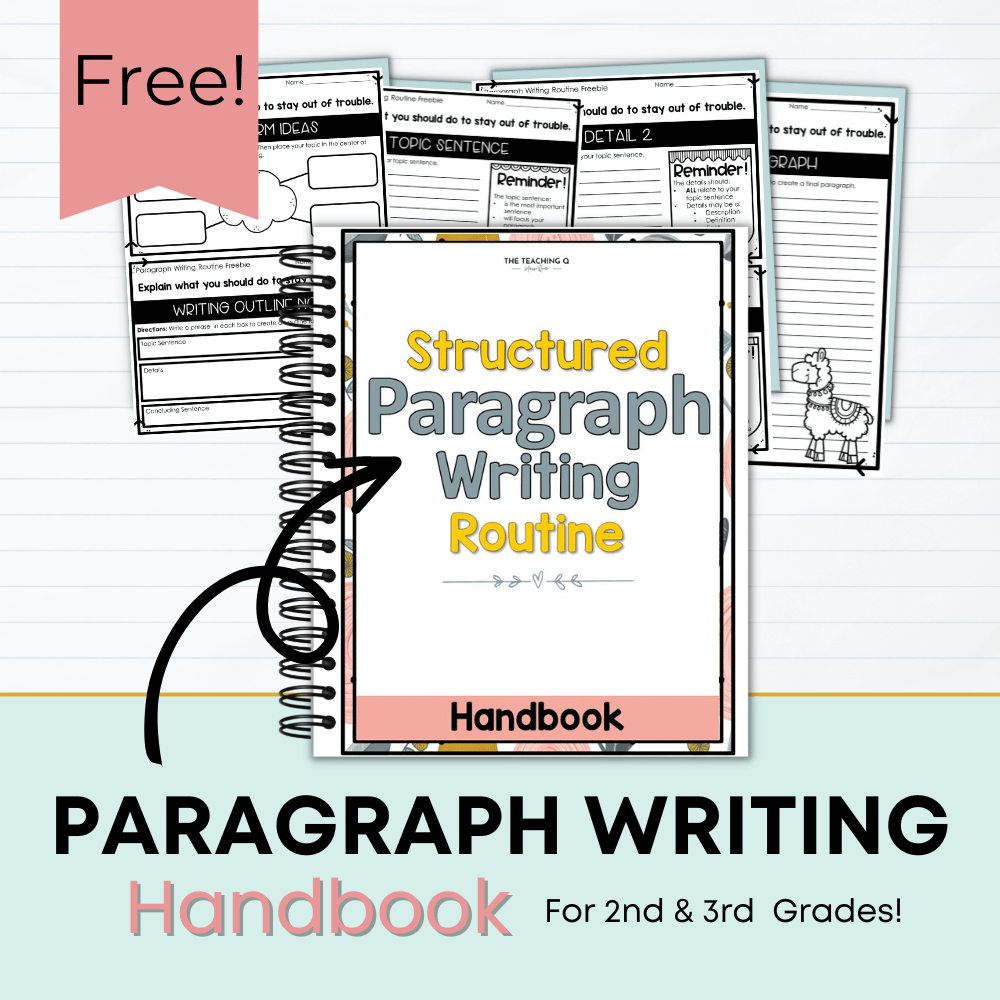Let’s talk about reluctant writers. We all have them. And boy, are they frustrating. So, I have five strategies for reluctant writers that skyrocket their writing skills in no time.
Mini-Lessons for Struggling Writers
The first strategy is to keep your writing lessons short and sweet. Most reluctant writers are overwhelmed by the amount of new learning in front of them.
Put yourself in their shoes. Think back to when you learned a new skill, such as writing in another language.
How long did it take you to succeed? I’m sure it wasn’t overnight.
You probably were most successful with the task broken down into smaller bite-sized chunks.
For this reason, I prefer to have a smaller writing block more often than a larger writing block less often.
I plan for five twenty-minute lessons each week. The smaller chunks of time allow for one focus skill a day. Each day’s lesson usually builds upon one another.
Students have ONE learning target to focus on, which lends itself to success.
Example of my mini-lessons from my Weekly Paragraph Writing Resources:
- Monday- Brainstorm/Outline
- Tuesday- Topic Sentence (Yes, just one sentence, but it’s vital.)
- Wednesday- Details (Adding the examples, exclamations, or explaining)
- Thursday- Concluding Sentence
- Friday- Put it all together!
When you sign up for my email list, you can try it out and get a FREE Week of my Paragraph Writing. You can read more about the paragraph writing routine here.
Strategy Tip Take-Away:
Plan to use mini-lessons that focus on one target skill each day.

Writing Prompt Strategies for Reluctant Writers
My next tip is to use writing prompts that are engaging and exciting for the reluctant writer.
Once again, put yourself in the reluctant writer’s shoes. Have you ever been that thrilled to write on a topic you have very little interest in or desire to learn?
I would bet my bottom dollar the answer is a big fat NO!
So, get to know the interests of your reluctant writers. A simple questionnaire helps uncover student interests.
But I’d rather have a simple conversation to discover the topics students of interest.
One of my most popular writing prompts in my Informative Writing Unit, Toy Edition, asks the students to write about a favorite toy.
Now, we all know how much the kids can talk about toys. YES, they can go on for days!
Another way I entice students to write is by first letting students create a craft centered around the prompt. The whole time we build the project, students use language they will apply to their writing.
The student enjoys the craft. I love the building of knowledge.
Here’s a link to my growing bundle of Writing Craftivities.
Strategy Take-Away:
An engaging and high-interest writing prompt will motivate reluctant writers.

Graphic Organizers for Reluctant Writers
One of the key strategies to support reluctant writers is to use graphic organizers. Although graphic organizers are essential to all writers, the reluctant writer often needs the visual to see the writing structure required for the prompt.
Also, filling out the graphic organizer is one of the mini-lesson strategies discussed earlier. It’s the small-bite-sized step moving the writer forward towards the final writing.
It’s important to note that the graphic organizer requires higher-level thinking while requiring simple words and phrases. Complete sentences are not necessary at this point.
This step allows the writer to adjust and modify their thinking as needed.
I prepare this WRITING FOLDER for students’ desks, holding all the essential graphic organizers. Students can refer to the folder as needed at any time. The resource also includes a digital version for students to have the same support at home.
Strategy Take-Away:
Graphic organizers are vital to the writer’s success.
Use Sentence Stems- Strategies for Reluctant Writers
Sentence stems are used as a support to get the writer going. The simple nudge helps the writer form a complete sentence before writing takes place.
Once the student is successful with the sentence stem, they are ready for the pencil to the paper process of writing.
Sentence stems provide the scaffolding to help students get started with speaking or writing without the added pressure of thinking about how to formulate a response correctly.
The Teachers Tool Kit
Strategy Take-Away:
Relieve your reluctant writer of the writing pressures by utilizing sentence stems throughout your lessons.

Speaking Strategies for Reluctant Writers
Often the power of oral language is overlooked in writing instruction. There are two forms of spoken language that may serve your reluctant writer well.
Use Partner Discussions:
Partner discussions should be an all-day, everyday type of classroom strategy.
During partner discussions, students can “practice” what they will write. This activity is an essential strategy for reluctant writers.
Often, the partner discussions can make or break their success.
So keep in mind that you’ll want to maintain a Partner Routine that ensures the partners are equally sharing first or second.
We wouldn’t want the more verbal student to monopolize the conversations and seldom allow their partner time to speak.
I have these FREE Partner Match Up Cards to help you create student partners. Once students have their list of partners, the teacher calls out an emoji. Or team up with your Cool Face emoji partner.
Speaking into Google
Another strategy for reluctant writers is the use of Voice Typing. In case you’re not familiar, let me explain.
Students may find Voice Typing under the Tools tab within a Google Doc. The student speaks his writing, and Google Docs will type each word.
It’s a total game-changer for many students that need a little more support before moving on to writing their thoughts on paper.
I have found great success with reluctant writers with this strategy. Often, the child relies on the tool for a few assignments and then slowly moves away from the support.
The Voice Typing may be necessary for a more extensive-time time. Voice Typing is a great tool for students that may have learning accommodations.
Strategy Take-Away:
The opportunity to speak about thoughts and ideas orally before writing is another strategy to get writers ready to write.
Your Next Lesson
Before starting your next lesson, think about which strategies for reluctant writers you will use to support your reluctant writers.
Will you use the smaller mini-lessons or provide kid-approved writing prompts and graphic organizers? Or maybe you’ll choose to include sentence stems and more speaking opportunities?
And hopefully, you’re saying, “I’m going all-in! I plan to include all the strategies with every writing lesson!”
Tell me which of the listed strategies are on YOUR must-do list for your writing instruction.

Are your students struggling and making very little progress in writing? Or maybe they’re unmotivated or a reluctant writer? If so, I’ve got your back.
Yes…I…Do!
Let me share my secret sauce when it comes to teaching writing to elementary students.
It’s the Sentences, Paragraphs, and Essays: OH, MY! E-book.
Click this link to learn more about how the E-Book can transform your students’ chicken scratch, hap-hazard writing into strong, effective, glorious writing!
Let’s support our writers together,
-Melissa



